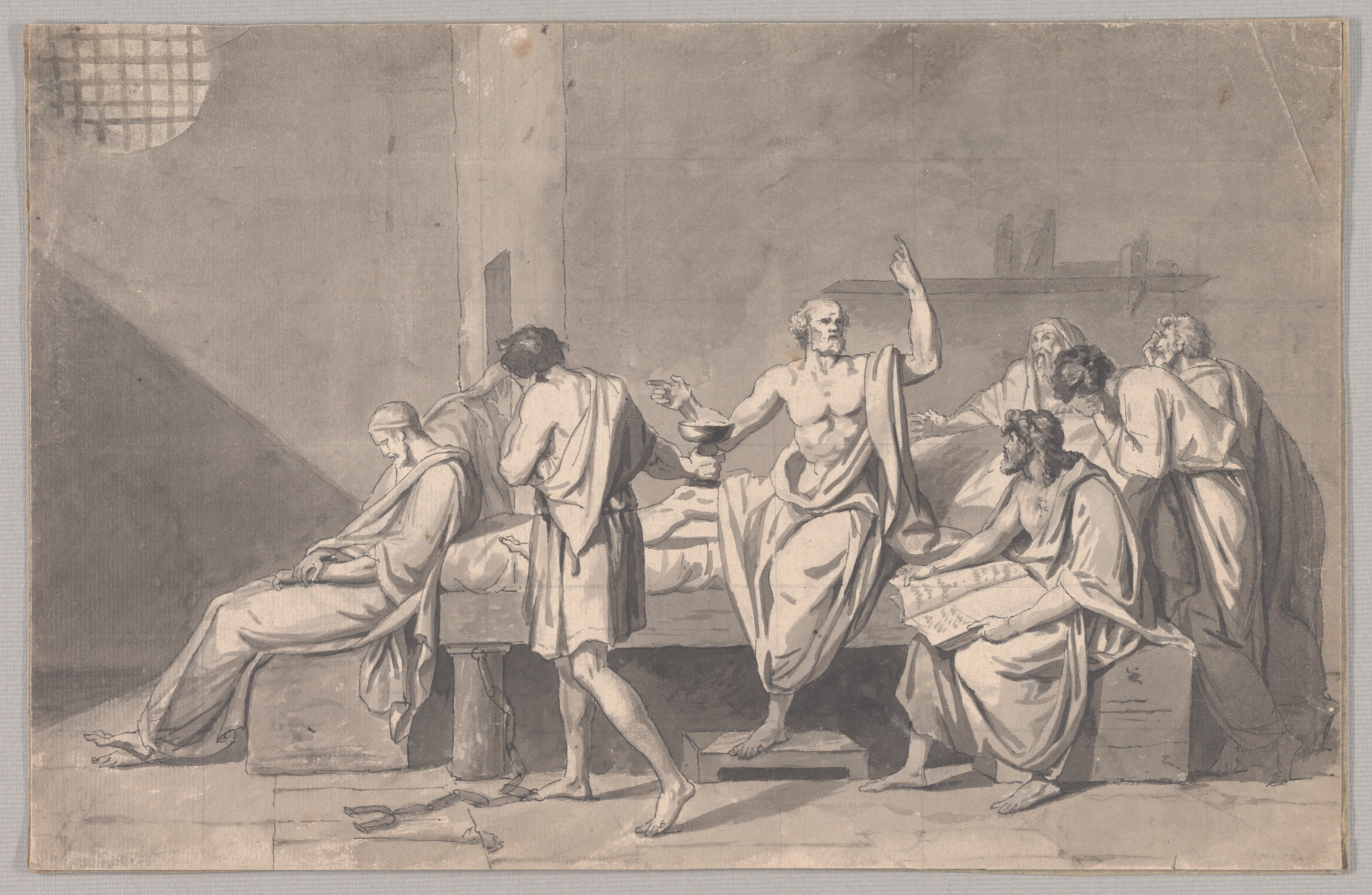The Death of Socrates
Jacques Louis David French
Not on view
This sheet is an early exploration of the subject that Jacques Louis David would later treat in his 1787 painting, The Death of Socrates 31.45, which entered the Met’s collection in 1931. It is essentially a tracing or re-drawing of a looser sketch in a private collection (Rosenberg-Prat, 2002, I, no.52, pp.71-72) which bears a date of 1782. The composition of these two early treatments features the ancient Greek philosopher Socrates in his prison cell, surrounded by disciples. Sentenced to death by the Athenian courts for his unorthodox beliefs, he prepares to drink from a cup of hemlock. His gesture heavenward indicates that he has paused to expound upon his theory of the immortality of the human soul.
David would return to the theme in 1786 when Charles-Louis Trudaine de Montigny, a wealthy conseiller in the Paris parliament, commissioned from him a painting on the subject. At that point, he made a quickly executed composition sketch, also in the museum’s collection (2015.149), incorporating various new ideas. In the later drawing, he has added recession with an arched passageway leading to a set of stairs on the left and supplemented the number of disciples on the right.
These works are characteristic of David’s elaborate method of preparing his major canvases. He typically progressed from sketches to numerous more finished compositional studies, introducing small changes and refinements with each iteration. Only when the composition was fairly resolved would he begin making studies for individual figures. The museum’s collection also includes a drapery study for Crito (61.161.1), the disciple seated on the block to the right.
(Perrin Stein, July 2017)
This image cannot be enlarged, viewed at full screen, or downloaded.
This artwork is meant to be viewed from right to left. Scroll left to view more.








